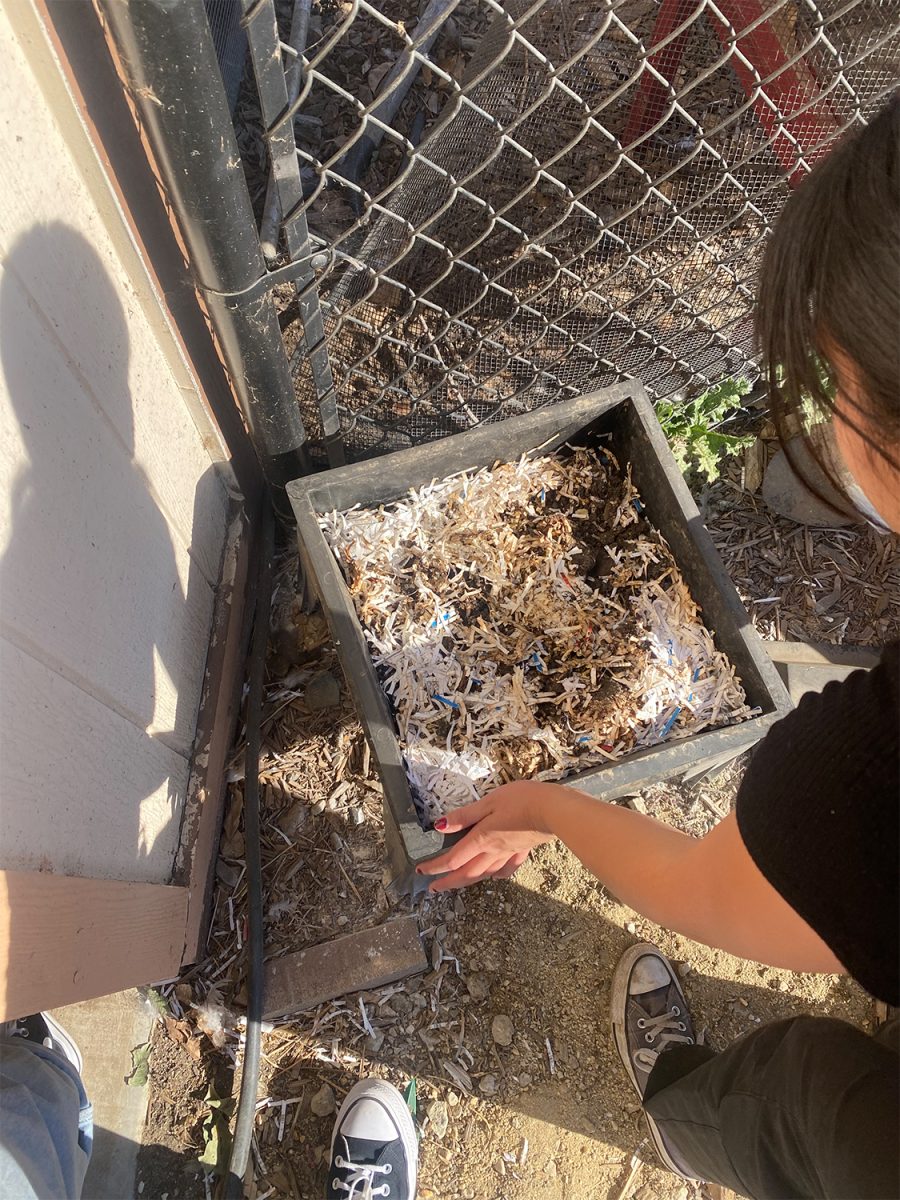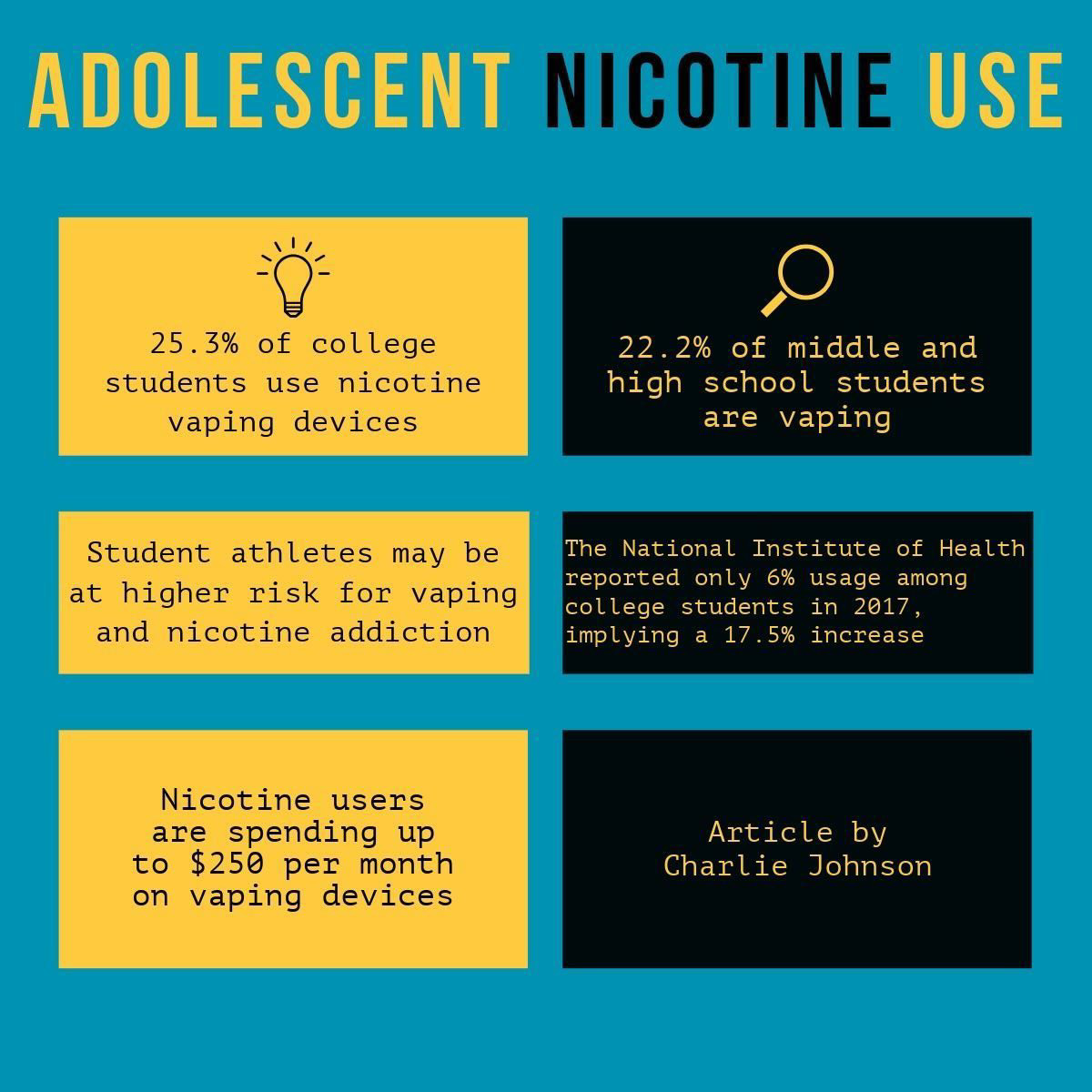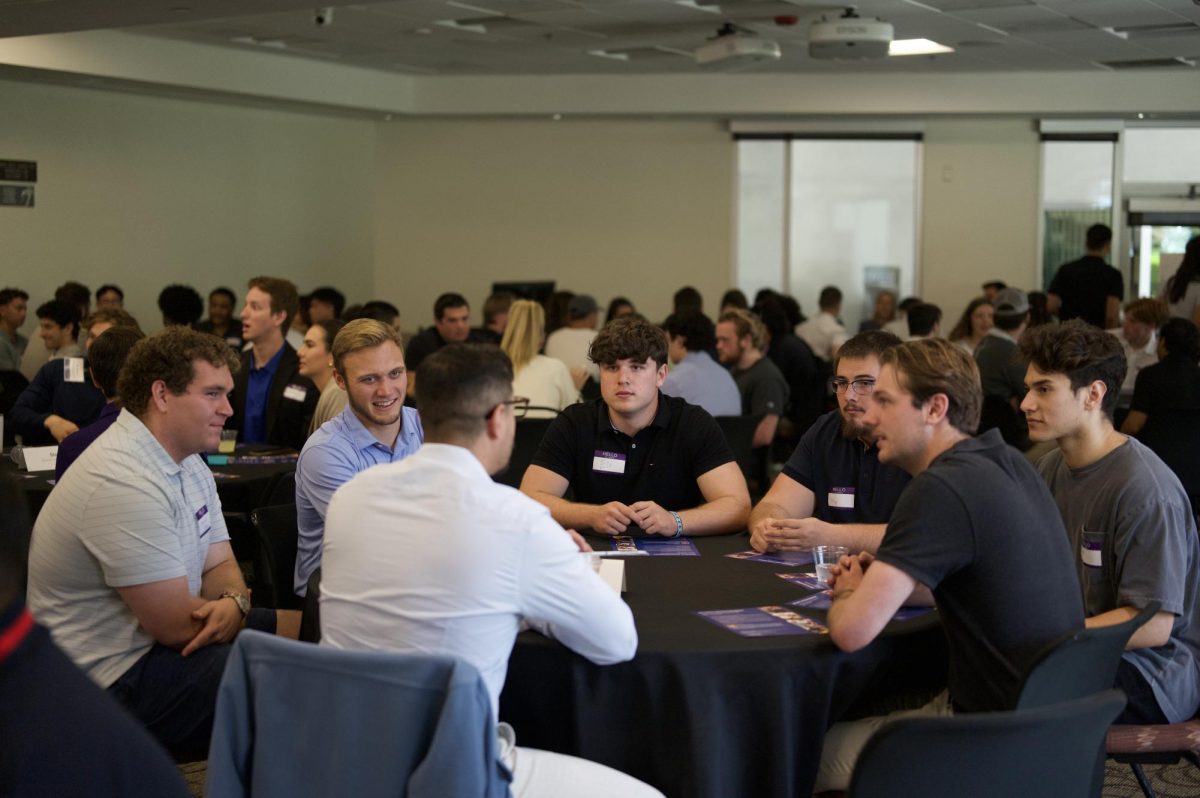In most food service operations, food preparation and serving contributes to food waste. At California Lutheran University, Ullman Commons, the university’s dining hall, and the Sustainable Edible Education Garden, try to minimize food waste.
According to Sodexo Catering Manager Alysha Nizam, most food waste in food service operations is created by food scrap, which includes the trimming and peeling of food, and the removal of skin and bones. Nizam said the process of food preparation makes up about 10-15% of food waste.
“Expired food, or food that comes to us that may not be exactly the quality that we want, can also contribute to food waste,” Nizam said. “Those things don’t happen very often.”
Another factor that contributes to food waste is the guest count at Ullman Commons, Nizam said. Sodexo, Cal Lutheran’s catering services, looks at historical data of Ullman Commons for trends in the participation of students coming into the dining hall.
Sodexo General Manager Elizabeth Nepute said by monitoring the number of students who eat at campus dining locations, they can understand how much food they should produce to minimize the overproduction and waste of food.
“Wednesdays are typically low in Ullman Dining, then they will typically produce less unless they know a big group is coming,” Nepute said.
Director of Auxiliaries Clinton Oie said this is a challenge because each dining location wants to ensure there is enough food for everyone on campus.
As Ullman Commons is an all-you-can-eat dining location, Nepute said that sometimes there are students who serve themselves more food than they can intake, which increases the amount of food waste. However, Nepute said students are encouraged across all food stations in Ullman Commons to serve themselves in small portions first because they can always return for more.
“So, on our side, we’re portioning smaller when we are allowed to, or when it makes sense,” Nizam said. “But then we also have signs out just so the students will think ‘Do I really need to have a giant plate of food?’”
According to Nizam, this is not meant to limit the amount of food the students eat, but to reduce food waste.
Post-consumer food waste that is left on students’ plates, Nepute said, goes into the pulper machine. Nepute said the machine adds moisture and grinds up leftover food, just like a garbage disposal, and is put in a bag that is taken down to a food dehydrator.
After the food is dehydrated, Nepute said, it either goes to the SEEd Garden or is dumped on the hills surrounding Cal Lutheran as fertilizer. Oie said the final product of the dehydration machine needs to be dealt with immediately so it does not sit and rot, as part of it is brown essence or waste.
“The SEEd Garden is run by student volunteers. They come when they’re available, so we just make sure we coordinate with them,” Nepute said.
According to SEEd Compost Manager Cristiann Dipietrantonio, the compost station was started to reduce the university’s carbon footprint and the amount of waste produced. Dipietrantonio said the compost station also creates more nutrients and organic matter that are beneficial for the soil.
“It is like a circular system. Whatever comes into it also gets put out, and then the plants that have been grown using the compost then also will go back into the compost,” Dipietrantonio said.
One of the challenges that come with the composting process is finding a balance between green waste and brown waste. Green waste is any organic waste that can be composted, and brown waste is any biodegradable waste that is predominantly carbon-based.
Every Friday, Dipietrantonio said Sodexo drops off their food scraps, and then she manually mixes it into the compost.
“I would actually say that is one of the biggest challenges,” Dipietrantonio said. “Compost is just very labor intensive. So, I have to go in there manually and mix it all up and make sure…I’m adding equal amounts of brown and green waste. And then you also have to shovel the compost out when it’s, like, actually ready.”
According to Dipietrantonio, the composting process can take anywhere from three to nine months and depends on what is being added, as different things decompose at different times.
“A pumpkin is going to take longer because of how thick it is compared to, like, if you were to put in a bunch of, like, fruit peels,” Dipietrantonio said.
Once the food is decayed and eaten up by worms, Dipietrantonio said, the compost should be able to be molded as a ball and keep its shape. Then, she said, it is taken out and has to sit for two to three weeks to cure. Dipietrantonio said if it was added directly to the plants, it would give them too many nutrients, which could shock it.
“I think it’s [compost station] overall a well successful, well-sustaining system,” Dipietrantonio said. “We hope for it to grow more.”
Catering is another factor that produces food waste, Nizam said, especially when planning an event. Nizam said there are certain factors, such as the amount of people that are expected to attend versus the actual amount of people that actually attended, that can alter the amount of food waste produced from the event.
“I’m helping as a caterer and catering manager. Helping guide the client on how much to order for their group and asking the questions around their event,” Nizam said.
Another way Cal Lutheran is reducing food waste is through Gumby Grub, an initiative to contact those who are food insecure. According to Nepute, Sodexo partnered with Cal Lutheran to create Gumby Grub. Nepute said students are part of a list on the app, where a push notification is sent with a video of leftover food and the time that it would be available to retrieve.
“That helps with get people fed with food that’s still perfectly good and eliminates food waste,” Nepute said.
Nepute said the food is available for only a certain time frame to follow the Ventura County and California state health regulations for food.
“We put out paper plates and we just say, ‘Okay, anyone who wants to come, bring a friend, whatever, come and, [people] can eat from this time to this time,’” Nizam said.
Nizam said all food from Gumby Grub has to be consumed close to the designated location, and cannot be taken farther, as it would eliminate the safety of the food.
According to Nizam, another opportunity in catering is taking foods that are boxed up or have not been out where people would have touched it straight to the food pantry with a label and a date.
“We do have some food waste that we just can’t utilize in either one of those ways. If it’s been outside and really maybe contaminated in some sort of way, then we have to put it in the compost pile,” Nizam said. “So then, it goes into our dehydrator and it goes as compost to the SEEd garden.”
According to Nepute, any time something is left over post-production, the program weighs it and staff members record what it is, what station it was from and who they were. Nepute said this is a way the food waste can be tracked to avoid overproduction, and the budget used on food can be better managed.
According to Nizam, Sodexo is implementing a new program called Lean Path starting in January 2024. The program, she said, is going to help measure where the waste is and keep track of what is being overproduced.









